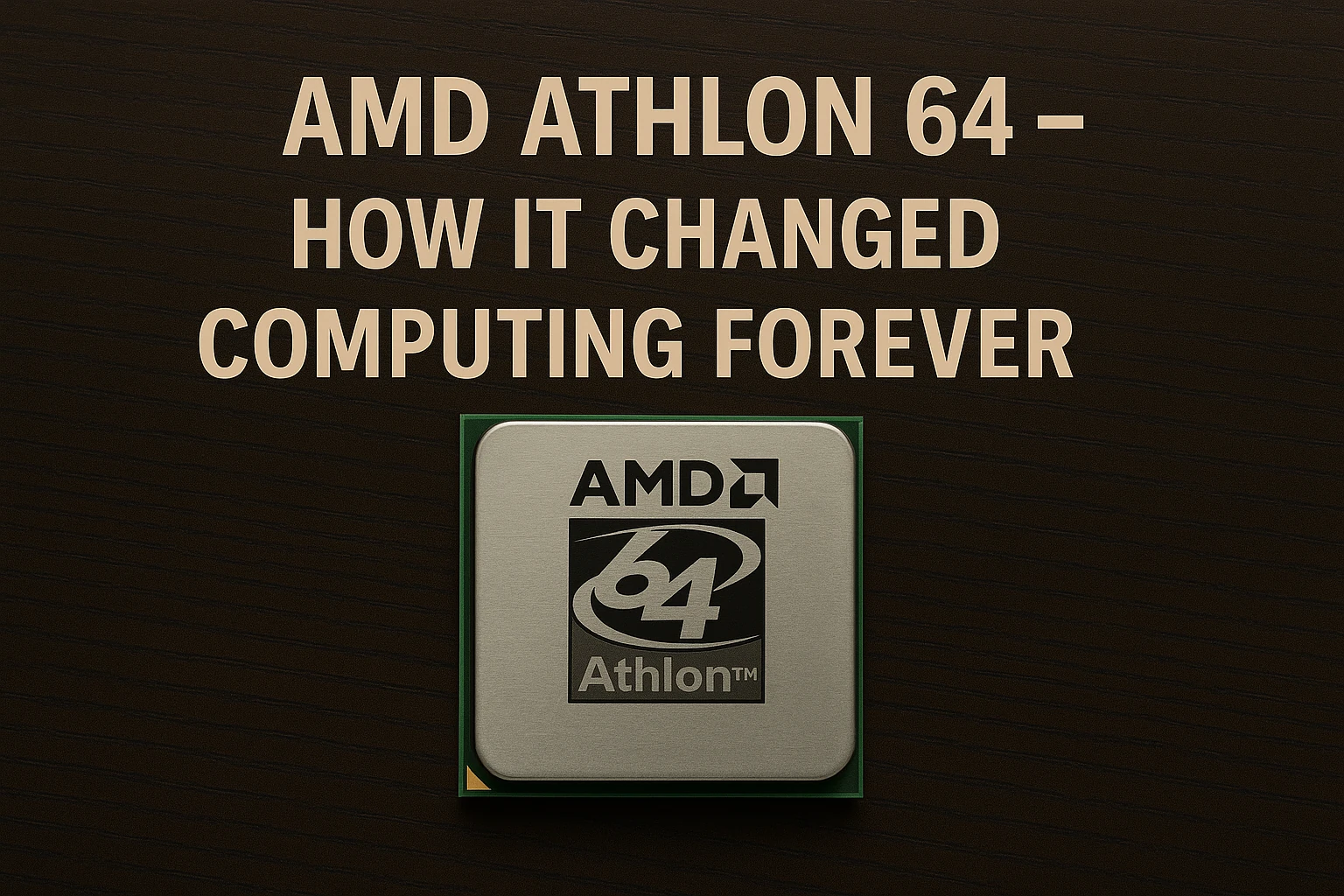AMD Athlon 64 – How It Changed Computing Forever
Introduction
In 2003, AMD revolutionized the CPU market with the Athlon 64, the world’s first 64-bit consumer processor. It wasn’t just a performance leap—it redefined PC architecture, crushed Intel’s Pentium 4 in efficiency, and laid the foundation for modern computing.

1. The Birth of Athlon 64 (2003)
Why It Was Revolutionary
- First x86-64 Architecture – Introduced AMD64 (later adopted by Intel as Intel 64).
- Integrated Memory Controller – Reduced latency, boosting real-world performance.
- HyperTransport Technology – Faster chip-to-chip communication.
First Models (ClawHammer & Newcastle)
- Socket 754 (Single-Channel RAM) – Budget/mid-range systems.
- Socket 939 (Dual-Channel RAM) – High-performance desktops.
- Clock Speeds: 2.0 – 2.4 GHz (early models), later up to 3.2 GHz.
2. Key Innovations
1. 64-Bit for the Masses
- Before Athlon 64, 64-bit computing was for servers (e.g., Intel Itanium).
- AMD proved 64-bit could work flawlessly in consumer PCs, with full 32-bit backward compatibility.
2. On-Die Memory Controller
- Intel CPUs still used northbridge chips (higher latency).
- Athlon 64’s integrated controller slashed memory delays by 30-50%.
3. Power Efficiency
- 90nm Process (Winchester core, 2004) – Ran cooler than Intel’s hot Pentium 4 Prescott.
- Cool’n’Quiet – Dynamic clock throttling to save power.
3. Athlon 64 vs. Intel Pentium 4: The Showdown
| Feature | AMD Athlon 64 | Intel Pentium 4 (Prescott) |
|---|---|---|
| Architecture | AMD64 (64-bit) | NetBurst (32-bit) |
| Memory | Integrated Controller | Northbridge-Dependent |
| Heat/Power | 60-90W TDP | 100-150W TDP |
| Real-World Perf. | Faster in games/apps | Higher clocks, weaker IPC |
Result: Gamers and enthusiasts switched to Athlon 64, while Intel scrambled to respond.
4. The FX Series: Extreme Performance
- Unlocked Multipliers – Dream chip for overclockers.
- Dual-Core Athlon 64 X2 (2005) – Beat Intel to consumer multi-core CPUs.
5. Legacy & Impact
- Intel Adopted AMD64 – Dropped Itanium, licensed AMD’s 64-bit extensions.
- Paved the Way for Ryzen – Same design principles (integrated memory, efficient cores).
- Lasted Until 2009 – Final Athlon 64s (Lima core) used 65nm process.
Where Are They Now?
- Still used in retro gaming PCs for Windows XP-era titles.
- Collector’s items – FX-55 and X2 4800+ are highly sought after.
Conclusion
The Athlon 64 wasn’t just a CPU—it was a paradigm shift. AMD forced Intel to play catch-up, proved 64-bit was the future, and set the stage for today’s processors. Without it, modern computing might look very different.
Tags: #AMD #Athlon64 #CPUHistory #RetroTech
Published: 2025-06-08
The author may have used AI technologies to create the article, and it might contain inaccuracies or errors.